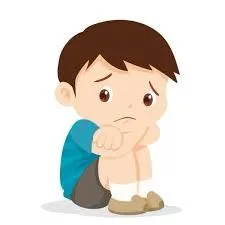Hola buen día mi Linda comunidad de Motherhood. / Hello good morning my beautiful Motherhood community
Como licenciada en Educación Preescolar les sigo dando información valiosa sobre las diversas circunstancias que puedan tener nuestros hijos, esta vez les voy a hablar sobre los temores a los que se enfrentan nuestros hijos y hasta los adultos lo experimentamos frente a diversas causas, el miedo en los niños sin embargo, tiene connotación especial.
As a graduate in Preschool Education I continue to give you valuable information about the various circumstances that our children may have, this time I am going to talk about the fears that our children face and even as adults we experience it in the face of various causes, fear in children however, it has special connotation.
El miedo, lejos de ser una debilidad, ha sido un instrumento que le ha permitido a los seres humanos de todas las épocas enfrentarse a lo desconocido y conservarse como especie. Cuando se nos presentan situaciones nuevas que puedan parecer peligrosas o amenazadoras, es lógico que el instinto de supervivencia adquiera relevancia y haya algún tipo de respuesta frente a ese objeto, pensamiento o circunstancia que nos afecta. Las reacciones varían de persona a persona, por ejemplo: al entrar en pánico, podemos huir rápidamente o paralizarnos. En otras ocasiones predominan los sentimientos tales como: desazón, angustia, desconcentración, etc. Finalmente otras respuestas que se pueden presentar además de las anteriores tienen que ver con las manifestaciones a nivel orgánico: sudor, temblor, respiración entrecortada, aceleración del ritmo cardiaco, inclusive hasta hacerse pipi.
Fear, far from being a weakness, has been an instrument that has allowed human beings of all times to face the unknown and conserve as a species. When we are presented with new situations that may seem dangerous or threatening, it is logical that the survival instinct acquires relevance and there is some type of response to that object, thought or circumstance that affects us. Reactions vary from person to person, for example: when we panic, we can flee quickly or become paralyzed. On other occasions, feelings such as: unease, anguish, deconcentration, etc. predominate. Finally, other answers that can be presented in addition to the previous ones have to do with the manifestations at an organic level: sweating, trembling, shortness of breath, acceleration of the heart rate, even to the point of peeing.
En la infancia predominantemente surgen frente al daño físico; años después en la adolescencia, el miedo es de carácter social: a no ser aceptado, al ridículo, etc.
En los primeros meses de vida, aun aun cuando no pueden hablar propiamente de miedo, los bebes pueden alterar su comportamiento por cansancio, hambre, dolor o nervios (ruidos fuertes, por ejemplo) y empiezan a llorar buscando la presencia y protección de la mamá.
Más adelante cuando ya tienen el año de vida tu hijo ya tiene una clara diferencia entre los estímulos ya conocidos y los novedosos y por ello pueden reaccionar ante las personas extrañas: el temor a los extraños es inherente a la naturaleza humana, las principales reacciones son: el llanto, dejar de sonreír, desviar la mirada y salir corriendo para aferrarse a mamá o a papá.
In childhood they predominantly arise in the face of physical damage; Years later in adolescence, the fear is of a social nature: of not being accepted, of ridicule, etc.
In the first months of life, even when they cannot properly speak of fear, babies can alter their behavior due to fatigue, hunger, pain or nerves (loud noises, for example) and they begin to cry looking for the presence and protection of their mother. .
Later, when they are one year old, your child already has a clear difference between the already known stimuli and the new ones and therefore can react to strangers: the fear of strangers is inherent in human nature, the main reactions are : crying, stop smiling, look away and run to cling to mom or dad.
SI ESTA ASUTADO:
• Abrázalo, tómalo de la mano o hazle cualquier caricia que lo reconforte. Esta clase de contacto físico generalmente les ayuda a sentirse seguros y a recobrar la serenidad.
• Evita a toda costa regañarlo o insistirle que no deba sentir miedo, por el contrario, procura que perciba tu comprensión acerca de sus temores y que todos, a veces, nos sentimos asustados.
• SE PACIENTE, no hay que molestarse cuando el niño insista en que está asustado. Nuestra ansiedad por calmarlo pronto, lo único que logra es aumentar su angustia y sus temores.
• No trates de cambiar lo que siente tu hijo, demuestra comprensión y respeto por su angustia y averigua que puede estar llevando a tu hijo a sentir temor.
• Recuerda que el afecto , las caricias, las palabras amables y las garantías de nuestro apoyo incondicional ante las dificultades son los mejores antídotos contra los temores de nuestros hijos y a la vez los mejores ingredientes para fortalecer su seguridad y su confianza en sus capacidades para defenderse.
IF YOU ARE ASUTED:
• Hug him, hold his hand, or give him any comforting caress. This kind of physical contact usually helps them feel safe and regain their composure.
• Avoid at all costs scolding him or insisting that he should not be afraid, on the contrary, try to make him perceive your understanding about his fears and that we all feel scared at times
.
• BE PATIENT, do not be upset when the child insists that he is scared. Our anxiety to calm him soon, the only thing that achieves is to increase his anguish and fear of him.
• Don't try to change how your child feels, show understanding and respect for his distress and find out what may be leading your child to fear.
• Remember that affection, caresses, kind words and the guarantees of our unconditional support in the face of difficulties are the best antidotes against our children's fears and at the same time the best ingredients to strengthen their security and their confidence in their abilities to defend themselves.
 imagen
imagen 

Esta es la primera parte de los temores de nuestros hijos, espero les guste y les de resultados positivos así como a mí.
Mañana nos vemos nuevamente para llevarles el final de este importante tema.
Feliz marte para todas.
This is the first part of our children's fears, I hope they like it and it gives them positive results as well as me.
See you again tomorrow to bring you the end of this important topic.
Happy mars to all of you.